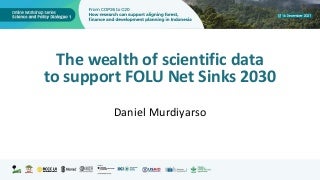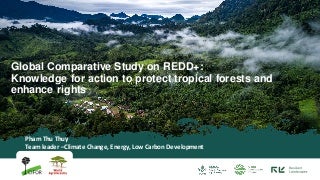|
|
|
|
|
Welcome to the August edition of the CGIAR Research Program on Forests, Tees and Agroforestry (FTA) newsletter.
In our special feature for this newsletter, looking a t the role of forests and trees in climate change, we call for a shift of focus from trees and mitigation to trees and adaptation. There is a need to explore what forests, trees and agroforestry can bring to the adaptation of other sectors, particularly agriculture. This coincides with a need to change perspectives, from a dominant global perspective centered on carbon, to a local perspective centered on what works for farmers in a particular place. t the role of forests and trees in climate change, we call for a shift of focus from trees and mitigation to trees and adaptation. There is a need to explore what forests, trees and agroforestry can bring to the adaptation of other sectors, particularly agriculture. This coincides with a need to change perspectives, from a dominant global perspective centered on carbon, to a local perspective centered on what works for farmers in a particular place.
In June, FTA participated in the Asia-Pacific Forestry Week (APFW) in Songdo, the Republic of Korea, where the Forestry and Agriculture Organization of the United Nations (FAO) launched the report “Forest Futures: The outlook for forests, landscapes and people in the Asia-Pacific region” – a publication to which FTA significantly contributed.
FTA also launched its new website at the Global Landscapes Forum (GLF) in Bonn in June. The session, “Data and digital resources for decision making on forests, trees and agroforestry” was lively and well attended, and FTA’s resources and data portal garnered much interest from the participants.
FTA also organized a digital summit on inclusive finance, drawing on the eight interviews that have been published on the theme. During the summit, “Inclusive finance: Paying the way for sustainable landscapes”, Pauline Nantongo of Ecotrust in Uganda, Juan Carlos Gonzalez Aybar of Althelia Funds and Marco Boscolo, forestry officer in the policy, governance and economics group of FAO discussed their experiences and thoughts on the way forward for the upscaling of innovative finance mechanisms that support sustainable landscapes and consider the smallholders within these landscapes.
You can watch the summit online here, and read a summary of our inclusive finance interviews here.
Read on for more about the latest FTA publications, resources and events.
Vincent Gitz
FTA Director
|
|
Special feature
|
|
|
 The role of forests and trees in mitigating climate change and capturing and storing carbon in biomass and soil is well recognized. Over the past few decades, a variety of schemes, including REDD, REDD+, 4per1000 and AFR100 have been designed to leverage this mitigation potential. The role of forests and trees in mitigating climate change and capturing and storing carbon in biomass and soil is well recognized. Over the past few decades, a variety of schemes, including REDD, REDD+, 4per1000 and AFR100 have been designed to leverage this mitigation potential.
However, much less attention has been given to the role of forests and trees in helping farmers and farm systems adapt to climate change. Today, with climate change impacts already having immediate, dramatic impacts on smallholder farmers, it is time to have a more balanced approach.
That’s why we are calling for a shift of focus from trees and mitigation to trees and adaptation. There is a need to explore what forests, trees and agroforestry can bring to the adaptation of other sectors, particularly agriculture. |
|
News
|
|
|
 Continuing a series of interviews on inclusive landscape finance, Tevis Howard, founding director of Komaza, shares his insights with Bas Louman of Tropenbos International. Continuing a series of interviews on inclusive landscape finance, Tevis Howard, founding director of Komaza, shares his insights with Bas Louman of Tropenbos International.
Komaza, founded in 2006, is a vertically integrated forestry company that is involved in forest production from tree nurseries, tree cultivation, harvesting and processing, to selling to domestic and international customers. The company is based in Kifili, Kenya.
Different from other forestry companies in Africa, which produce timber in large plantations, its production is based on thousands of small woodlots in partnership with as many smallholder farmers. This fits into the production model in Kenya well, where more than 50 percent of the wood supply comes from such farmers.
Tevis Howard gives us some insights into the challenges and opportunities he faced in seeking finance during the 13 years since the foundation of the company. |
|
|
|
 In the penultimate interview of our initial inclusive finance series, we hear from Marthe Tollenaar and MaryKate Bullen of New Forests, an Australia-based fund management company with more than A$5 billion invested in sustainable leading-edge forestry, land management, and conservation projects in the Asia-Pacific region and the United States. In the penultimate interview of our initial inclusive finance series, we hear from Marthe Tollenaar and MaryKate Bullen of New Forests, an Australia-based fund management company with more than A$5 billion invested in sustainable leading-edge forestry, land management, and conservation projects in the Asia-Pacific region and the United States.
In this invterview they discuss what is meant by ‘inclusiveness’ and why it should be addressed by financial institutions.
“At New Forests, we consider inclusiveness to mean the generation of value for all stakeholders in our business, including investors and communities, and the environment. We believe that an inclusive approach ensures steadier and more long-term profitability, and creates opportunities through shared value business strategies.” |
|
|
|
 Agroforestry will only make its way to the top of global development agendas – fulfilling its rightful role as a solution to climate change, biodiversity loss, malnutrition and poverty – if we are able to deliver a clear message. Agroforestry will only make its way to the top of global development agendas – fulfilling its rightful role as a solution to climate change, biodiversity loss, malnutrition and poverty – if we are able to deliver a clear message.
This article takes a close look at five lessons on how to succeed with agroforestry, based on work presented by scientists contributing to FTA at the 4th World Congress on Agroforestry.
Agroforestry may not be a one-size-fits-all solution, but it is an adaptable, applicable practice that fits the complexity of today’s development challenges. And with these top five lessons in hand, farmers, development practitioners, donors and private sector actors may be better placed to achieve its potential. |
|
|
Banner photo by O. Girard/CIFOR. Special feature and news photos, from top, by: R. Martin/CIFOR; P. Sheperd/CIFOR; T. Saputro/CIFOR; T. Saputro/CIFOR
|
|
|
|
|
|


 t the role of forests and trees in climate change, we call for a shift of focus from trees and mitigation to trees and adaptation. There is a need to explore what forests, trees and agroforestry can bring to the adaptation of other sectors, particularly agriculture. This coincides with a need to change perspectives, from a dominant global perspective centered on carbon, to a local perspective centered on what works for farmers in a particular place.
t the role of forests and trees in climate change, we call for a shift of focus from trees and mitigation to trees and adaptation. There is a need to explore what forests, trees and agroforestry can bring to the adaptation of other sectors, particularly agriculture. This coincides with a need to change perspectives, from a dominant global perspective centered on carbon, to a local perspective centered on what works for farmers in a particular place.



























